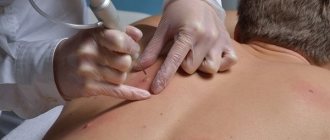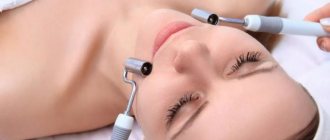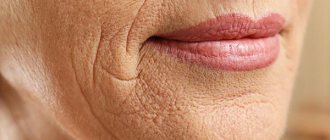Home » Blepharoplasty » Operation
Blepharoplasty is an operation to remove subcutaneous fat in order to eliminate facial wrinkles in the upper or lower eyelid. With the help of light surgical intervention, age-related changes in the skin are corrected. As a result, the patient receives a quick rejuvenating effect, his look becomes fresh, young, and open.
Like any other operation, blepharoplasty is considered a serious intervention in the body. There are indications, contraindications and possible complications here. To achieve the desired effect and easily overcome the rehabilitation period, the patient must undergo examination and follow all the surgeon’s recommendations. Therefore, preparation for blepharoplasty is no less important than the operation itself.
Definition of contraindications
First of all, the doctor carefully interviews the patient. He determines whether he has diseases of the heart, kidneys, liver, blood vessels, blood, respiratory and nervous systems, and whether he has allergies to medications. The hereditary factor plays an important role, so the specialist is interested in diseases that close relatives suffered from.
If the patient agrees that he has diseases of his organs and systems, or the doctor suspects a previously undetected pathology, the patient must be thoroughly examined. If there are no serious deviations that could interfere with blepharoplasty, then you can prepare for the operation itself.
An ophthalmological history is also determined. Eye diseases may be a contraindication to surgery. So, the surgeon rarely allows the patient to undergo surgery if he has dry eye syndrome, this can cause complications and lead to an unsatisfactory result.
But this is not a critical contraindication - if the disease is cured, surgery will be scheduled. In the presence of chronic eye diseases, the prognosis is less favorable - blepharoplasty is contraindicated for life in such patients.
The surgeon needs to know about previous eye surgeries, including vision correction. If repeated blepharoplasty is planned, then complete information about the previous intervention will help the surgeon competently plan the operation and anticipate possible complications. In many situations, examination by an ophthalmologist, psychologist, or surgeon before surgery is considered mandatory.
We recommend: How is blepharoplasty for bags under the eyes performed?
Side effects
The skin of the eyelids is considered one of the most vulnerable areas, so uncomfortable consequences cannot always be avoided. Complications can be early, observed in the postoperative period. Late ones also appear, caused by an unsuccessful operation due to insufficient qualifications or experience of the surgeon.
Consequences of blepharoplasty:
- swelling;
- hematomas;
- inversion of the lower eyelid;
- change in the shape of the palpebral fissure;
- keloid scars;
- incomplete closure of the eyelids;
- eye asymmetry;
- drooping upper eyelid;
- cyst.
Note! Late consequences mainly require surgical correction. Hardware procedures are used to correct keloid scars. If the seams come apart, re-suturing is required, which can lead to the formation of a rough scar.
If the eyelids do not close completely, the mucous membrane of the eye dries out, and repeated blepharoplasty is necessary. Benign formations can go away on their own or be corrected during surgery. To eliminate eye asymmetry and drooping upper eyelid, plastic surgery is prescribed.
Additional Research
The next stage will be additional research. It is necessary to take blood tests, urine tests, fluorography, and an ECG. If the tests determine the disease, the therapist will send the patient for additional examination and treatment to a specialist, even if there are no complaints.
How to get tested?
Typically, tests are taken independently in a clinic at your place of residence or in a private clinic:
- general blood analysis. Blood is taken from a finger on an empty stomach. This analysis will determine the acute infectious process, blood clotting, immunological activity;
- general urine analysis and microflora culture. The patient needs to collect 50 ml of urine in a sterile jar in the morning. The analysis reveals acute and chronic diseases of the kidneys and urinary tract, infections, metabolic disorders;
- blood chemistry. It is taken from a vein on an empty stomach. Analysis of litter to reveal the level of glucose, creatinine, urea, prothrombin, bilirubin, as well as blood group and Rh factor;
- blood test for infections. Blood is taken from a vein. The analysis detects HIV, hepatitis, syphilis.
Opinion of cosmetologists
On forums, cosmetologists share their experiences about performing blepharoplasty.
In the review, the user recommends blepharoplasty to correct creases and not waste time on useless procedures.
A participant asks whether it is possible to use botulinum toxin after surgery; the gentle procedure is combined with various injection programs.
Planning the operation
If everything is fine with the tests, then preparations for blepharoplasty take place. The surgeon evaluates the patient’s appearance, analyzes the shape of the eyes and eyebrows, the condition of the muscles, the amount of excess skin and fatty tissue, identifies the severity of facial wrinkles and tells the patient what results can be obtained using a particular blepharoplasty technique.
He should talk about all the methods, their advantages and disadvantages. But, taking into account the patient’s age, his wishes, the condition of the tissues, individual structural features, and budget, the surgeon must recommend the most suitable method. After this, he explains how the operation and rehabilitation period will proceed, and what complications may arise.
It is imperative to clarify all financial issues before surgery, so that there are no questions or disagreements later. To track all changes in appearance, the surgeon takes photographs of the patient from different angles. Many clinics offer computer modeling. Thus, you can see your appearance as close as possible to the result of the operation.
We recommend: What is circumferential blepharoplasty?
Alternative procedure
There are a number of techniques that replace surgical intervention, but also correct and visually hide eyelid imperfections. These include:
- Decorative makeup using foundations selected for skin type and color.
- Decorative silicone stickers, with the help of which the drooping eyelid is raised.
- Botox is a cosmetic injection that temporarily and locally stops the aging process of the skin.
- Polishing problem areas of the skin.
- Massage of the area around the eyes, which is carried out in a cosmetology office.
How is blepharoplasty performed?
Let's consider several of its stages:
- the surgeon uses a scalpel to make an incision just below the growth of the eyelashes (if lower eyelid blepharoplasty is performed);
- then eliminates subcutaneous fat, tumors and excess skin;
- upon completion of the operation, the doctor applies microscopic sutures;
- in the area of the upper eyelid, the procedure is performed in a similar way, but the incision is made in its natural skin fold.
Regarding the use of anesthesia during surgery, many surgeons prefer local anesthesia.
The recovery period after blepharoplasty of the upper or lower eyelids or a circular lift is 12 days. On day 3, the stitches are removed. During the rehabilitation period, the following complications are possible:
- swelling;
- hematomas;
- increased sensitivity of the mucous membrane of the corners of the eyes.
They usually go away after 5 days. To get rid of unpleasant sensations, the doctor recommends using moisturizing gels around the eye skin and hypoallergenic drops. You cannot use decorative cosmetics for 10 days. If you have thin and sensitive skin, then you should prepare for a long recovery process after surgery.
To prevent the duration of rehabilitation and the occurrence of possible complications, modern aesthetic medicine offers a new method of operation - transconjunctival. In this case, the operation is performed using a laser. A small puncture is made on the inside of the eyelid, through which excess fatty tissue and tumors are removed. The main advantages of this method are:
- absence of scars and seams;
- rehabilitation lasts much less than with traditional methods of surgery;
- facial expressions are preserved.
Where they make it and how much it costs in Moscow
The cost of eyelid surgery is significantly lower than other types of plastic surgery. This is explained by a fairly simple manipulation technique. But this does not mean that you need to save on the procedure. Experience, practice, and qualifications of a doctor are crucial to obtain positive results. How much the operation will cost depends not only on the prestige of the clinic or the popularity of the plastic surgeon.
Correcting the lower eyelid is approximately 20% more expensive due to the labor-intensive process. Also, the price increases when using modern equipment - a laser, an innovative endoscope. The cost may include local or general anesthesia, consultation with a doctor and related specialists, stay in the clinic during the postoperative period, dressings, further monitoring of the healing process. The average cost is from 40,000 to 70,000 rubles.
How to choose the right clinic and plastic surgeon?
Before blepharoplasty, you not only need to undergo an examination, but also choose a place for the operation and a doctor. It is necessary to rely on the following points:
- doctor's qualifications;
- practical experience of a doctor;
- elegant results.
A qualified and experienced surgeon always has a good portfolio so that the client can compare photos before and after the operation, which should be on the official website of the clinic. It is on the basis of photographs that the client can draw a conclusion about the quality of the operation performed, as well as whether the doctor uses an individual approach to each of his patients.
We recommend: How is endoscopic blepharoplasty performed?
If the doctor has a video portfolio, then ask to show it at a personal consultation: this is the only way to learn about the surgeon’s qualifications, caution and meticulousness in relation to his work.
More gentle alternative methods
Non-surgical blepharoplasty eliminates the risk of side effects, and the result lasts up to 4 years. A significant advantage is the absence of anesthesia, as well as the ability to avoid ptosis, asymmetry, hematomas, swelling, and infection.
There are hardware and injection procedures that can achieve a similar result:
- Fillers based on hyaluronic acid change the contour of the eyelids and restore the elasticity of the skin around the eyes. Stimulates the synthesis of collagen and elastin.
- Injections, the formula of which contains enzymes, fatty acids, multivitamins, and plant extracts, can cope with swelling of the eyelids. The active elements penetrate the cell membrane, breaking down fatty tissue.
Rehabilitation period
Upon completion of the surgical intervention, a special bandage is applied. It has a cooling effect, which helps prevent bruising and swelling. On the first day after surgery, the patient must remain in the hospital under the supervision of a doctor, but can go home the very next day.
The first few days after blepharoplasty, you need to avoid contact with water, as well as high stress on the eyes: reading, working at the computer, watching TV. To restore skin tone during recovery after blepharoplasty, you need to do eye exercises. The exercises should be simple:
- rotation of eyeballs;
- light pressure on the eyeballs through closed eyelids;
- moving the gaze up and down.
During the first 3 days, you need to use antiseptic drops. On the 5th day of recovery, you need to go to a second appointment with the doctor, where he will remove the stitches. It does not matter whether you are recovering from an upper eyelid lift or a lower eyelid lift, you must follow all recommendations.
If the recovery process is successful, the stitches after the operation become barely noticeable after 3 weeks from the date of surgery. The final result is assessed after 1.5 months. During this time, the swelling goes away, and the incision area is completely healed.
To make postoperative scars less visible, you need to use Contractubex after surgery. This is a special cream that has a resolving effect and smoothes out stubborn tissue.
YouTube responded with an error: The request cannot be completed because you have exceeded your quota.
Rate this article:
- Related Posts
- What is blepharoplasty with canthopexy?
- What is the age limit for blepharoplasty?
- Where is blepharoplasty performed?
- How is blepharoplasty performed at Blokhin?
- How is blepharoplasty performed for wrinkles under the eyes?
- What are the pros and cons of blepharoplasty?
Preparing for tests
To obtain reliable data, you should:
- Come to the laboratory in the morning on an empty stomach. In the evening, it is better to have a light dinner, avoiding fatty and smoked foods.
- It is not recommended to drink alcoholic beverages several days before the appointed day.
- You can smoke no later than an hour before coming to the laboratory.
- You should not visit baths and saunas in the next 2 - 3 weeks before coming to the laboratory assistant, as overheating of the body can affect the results.
- On the appointed day, it is better to go to the laboratory 15 - 20 minutes before taking the tests to calm down and restore your breathing if there was a rush.
Stress, heavy physical activity, and nervous shock also affect the results, which is why they should be avoided the day before and on the chosen day.
Only after making sure that everything is fine with the patient does the doctor set a day for the operation. If he recommends undergoing other examination methods, you should not neglect his recommendations. In the end, not only health, but also life depends on the reliability of the results and obtaining an overall picture of health.
(1 ratings)
Expert opinion
- Surgeon
- Cosmetologist
Katrin Hecher
plastic surgeon
Blepharoplasty is one of the safest and most effective procedures in plastic surgery. But still, there are some troubles after the intervention. The most common complications of blepharoplasty are bruising, asymmetry, unfavorable scarring, hematoma, and eye irritation. There are other rare effects, such as dry eyes and the inability to close the upper eyelids if too much skin is removed. To minimize these risks, choose an experienced, board-certified plastic surgeon.
Anna Avaliani
practicing cosmetologist
To improve this area, it is possible to use a fractionated laser such as Fraxel, which will rejuvenate the skin under your eye.
This is a very simple procedure as there are no incisions and the improvement in skin condition is noticeable after one session. But in advanced cases, only blepharoplasty will help. But after it, a person runs the risk of swelling, bruising, scarring, irritation of the eye, and an unpredictable reaction of the body to anesthesia. It is worth watching a video of upper eyelid blepharoplasty to understand the nuances of the operation:
The skin around the eyes is one of the first to experience premature aging. Therefore, if you want to give your face a more youthful and fresh look, we recommend starting with this area.
Blepharoplasty is a simple operation that will help give depth to the look for a long time, making it more open and attractive.
Patient reviews
What do patients say about lower blepharoplasty? As often happens, there are varied reviews, but a positive attitude prevails among them. Of course, if a person has bothered to find a good specialist in advance.
Here is a girl sharing her impressions of transconjunctival blepharoplasty.
But he talks about the shortcomings of the surgeon’s work.
Here a woman talks about her eyelid transformation thanks to hyaluronic acid.
And here a dissatisfied client calls biorevitalization around the eyes a waste of money.
This woman found the result of RF lifting more than satisfactory.
But for this patient, Thermage practically did not help.
Video: Non-surgical methods of eyelid lift
What is blepharoplasty? First of all, this is not an eraser that, with a slight movement of the hand of a surgeon or cosmetologist, will erase all unwanted changes from your eyelids. To achieve the optimal result, you need to consult with a specialist, read reviews and choose the method that is suitable for your case. Thus, hernias are more effectively removed using gentle transconjunctival blepharoplasty of the lower eyelids, dryness and sagging are amenable to hardware techniques and biorevitalization, wrinkles disappear under the influence of fillers or through classical surgery. Reflect, consult, choose. The final decision is yours.











